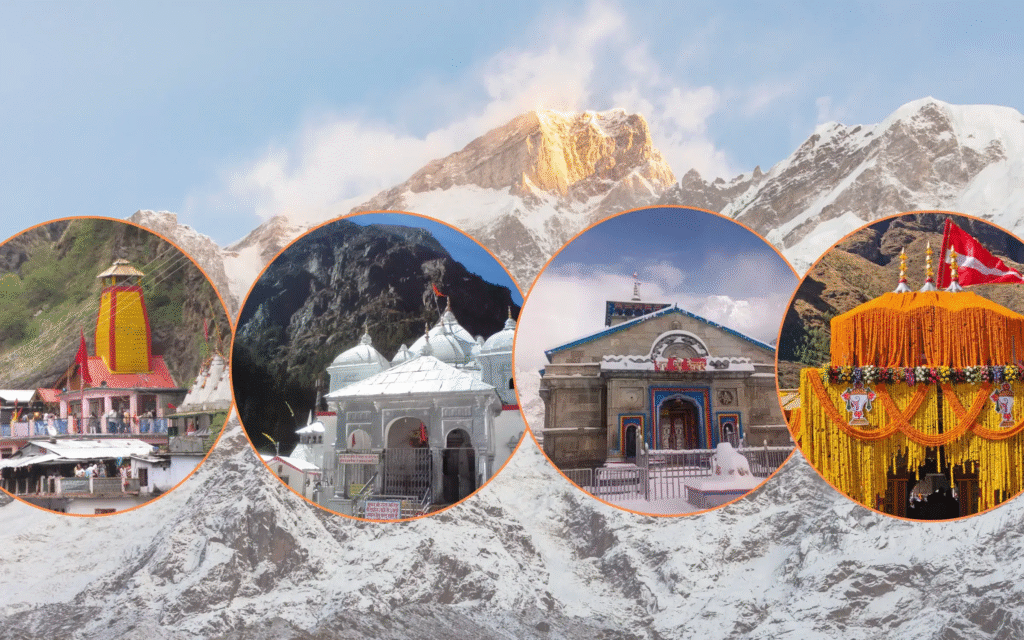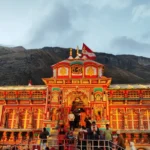
We all dream of the Char Dham—the deep peace you feel standing before Yamunotri, Gangotri, Kedarnath, and Badrinath. But that dream can quickly feel out of reach when you look at the travel costs. Sound familiar?
You might worry you have to sacrifice comfort or safety to keep the budget down. I’m here to tell you that’s not true! It’s less about cutting corners and more about making smart, intentional choices.
Since you’re planning for 2025, let’s use the most up-to-date knowledge on costs and routes. This guide is your friendly roadmap to managing your funds, travelling efficiently, finding simple, safe places to rest, and experiencing the true spiritual heart of the Himalayas without a financial panic.
Section 1: Your Money Map—Understanding the Route & Expenses
To keep costs low, you need to know exactly where you’ll be spending. The four shrines are unique, and your approach must adapt:
- Yamunotri: Means a good 6 km walk (up and down) from Janki Chatti. Get those trekking shoes ready!
- Gangotri & Badrinath: Thankfully, the roads take you right to the temple gate.
- Kedarnath: This is the big one—a challenging 17–18 km trek from Sonprayag. It requires physical preparation and the right gear.
What to Expect in Chardham Yatra Budget
Excluding your train/flight to Haridwar/Delhi, a comfortable-but-cheap 9–10 day yatra should cost you somewhere between ₹20,000 and ₹35,000 per person.
Here’s where you can save the most:
- Accommodation: Look for ₹500 to ₹1,500 per night. This means Ashrams, Dharamshalas, or GMVN rest houses. They’re simple, clean, and perfectly aligned with the spirit of yatra.
- Food: ₹300 to ₹600 per day is plenty if you rely on the local staple—the dal-roti thali.
- Transport: This is where the budget often breaks. Plan for ₹8,000 to ₹15,000 for the total circuit by using shared vehicles and local buses.
When to Go: Beat the Crowd, Beat the Price
- The Price Trap (May-June & Sept-Oct): This is the peak season. Everyone goes then. Expect accommodation and transport costs to be ridiculously high—sometimes double the shoulder season rates.
- The Smart Window: Aim for late April/early May (right after the opening) or mid-October/early November (just before the closing). The weather is a bit more unpredictable, but the crowds are manageable, and you will save thousands on lodging alone
If you just want to foucs on yatra you can also talk with any tour and travel company like The Mountain Trekker who will take care of everything from stay to food and everything.

Section 2: Moving Around Like a Local
Your transport choices determine 50% of your budget. Forget booking that private cab—that’s a luxury for another trip!
Transport Hacks
- Become a Shared Taxi Guru: Your single best friend in the mountains is the shared jeep or Sumo. They’re safe, fast (relatively speaking), and split between 8-10 people. Look for buses run by local co-operatives (G.M.O.U./Y.M.O.U.); they’re slower but unbelievably cheap.
- Haridwar as Your Launchpad: Take the cheapest train possible to Haridwar or Rishikesh. This saves you a huge chunk compared to flying and is a traditional starting point for the yatra.
- Your Feet are Free! Unless you have a genuine medical issue, please walk the treks (Yamunotri and Kedarnath). Pony and doli prices are astronomical and meant for tourists. The physical effort is what makes the pilgrimage so rewarding.
Accommodation Secrets
- Embrace Simplicity: The secret spots are the Dharamshalas and Ashrams. They are usually run by trusts, meaning the focus is on service, not profit. You get a basic, clean bed for that sweet low-low range of ₹500 to ₹1,500 (sometimes even less!). And hey, you’re up there for the spirituality, not a five-star view from your bed, right?
- Book Just the Essentials: Don’t book every night. Only pre-book your stays in peak demand areas like Sonprayag/Sitapur (Kedarnath base) and Badrinath. You can often find better deals on arrival in smaller towns like Uttarkashi.
Eating Like a Pilgrim
- Dhaba Loyalty: Stick to the local dhabas! You can get simple, unlimited vegetarian thalis for just ₹100 to ₹250. It’s fresh, hot, and keeps you energised. Many temples also offer langar or highly subsidised Bhojanalayas.
- Pack Your Trail Mix: The mark-up on snacks near trek points (especially on the way to Kedarnath) is criminal. Buy a big bag of dry fruits, biscuits, and energy bars in Haridwar or Rishikesh before you leave.

Section 3: 9-Day Budget Itinerary
Day 1: Arrival: Delhi → Haridwar/Rishikesh. Get settled in an Ashram. Get your registration done.
Day 2: Drive to the Mountains: Haridwar → Barkot/Janki Chatti. Early start to grab a seat on a shared vehicle.
Day 3: Yamuna Darshan: Yamunotri Trek → Uttarkashi. Trek up and down quickly, then take a shared taxi to Uttarkashi (a major transit town) to stay overnight.
Day 4: Ganga Darshan: Uttarkashi → Gangotri → Uttarkashi. Grab a shared taxi for the round trip; it’s a long but rewarding day.
Day 5: Kedarnath Transit: Uttarkashi → Guptkashi/Sitapur. This is a very long travel day. Take the earliest bus/shared taxi possible toward the Kedarnath base area.
Day 6: The Summit: Guptkashi → Kedarnath. Shared jeep to Sonprayag. Get your token. Start the long trek (17-18 km).
Day 7: Head South: Kedarnath → Badrinath. Morning Darshan. Trek down. Immediately jump on shared transport (it will involve a couple of changes: Guptkashi → Joshimath → Badrinath).
Day 8: Badrinath & Retreat: Badrinath Darshan. Visit Mana Village (free). Head down to Rudraprayag via shared bus/jeep.
Day 9: Journey Complete: Rudraprayag → Haridwar → Delhi. Take the local bus to Haridwar/Rishikesh.
Pro Tip: If you find like-minded budget travellers (easy to do at the bus stands!), pooling money to hire a slightly larger taxi can sometimes be cheaper and less stressful than waiting for unreliable local buses.
Section 4: Chardham Yatra Budget & Preparation Hacks
- Track Everything! Seriously. Put a budget app on your phone or carry a tiny notebook. High altitude fatigue makes you lazy—you’ll stop tracking and suddenly overspend.
- Don’t Be a Last-Minute Buyer: You’ll see vendors selling things outside the temple. Resist! Their prices are sky-high. Get what you need in the plains.
- Be Prepared for the Trek: A simple thing like wearing a good, water-resistant trekking shoe can save you from a nasty blister or a twisted ankle, which means avoiding a big, unexpected medical bill. Don’t skimp on footwear.
- Be a Water Warrior: Stop buying ₹20 plastic bottles. Carry a reusable bottle and use simple purification tablets or a filter bottle.
- Mandatory Registration: The Char Dham Yatra Registration is compulsory. This avoids any last-minute administrative costs, headaches, or delays. Get it done before you leave home!

Section 6: Final Thoughts & Encouragement
The Char Dham Yatra is one of India’s most profound experiences. When you choose to travel on a Chardham Yatra budget, you’re not compromising; you’re actually embracing the purity and simplicity of the original pilgrimage. You’ll get closer to the locals, meet amazing fellow travellers on the bus, and feel a deeper connection to the environment.
Plan early, book the essentials smartly, and trust in the simplicity of the journey. That sense of accomplishment when you finish the yatra will be even sweeter, knowing you did it all without breaking the bank!
If you loved reading about this Chardham Yatra Budget blog, you might also like Char Dham Yatra Registration blog.






Leave a Reply